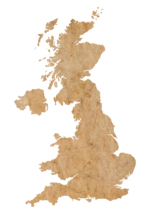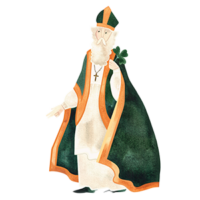The Man Behind the Clover: St. Patrick
History Rhymes with Mystery

St. Patrick wrote in his book, Confessions, that he grew up in a town called, “Bannavem Taburniae.”
It was a Roman town found within the abundant and sometimes treacherous islands of Britain. The mystery? Scholars today are not exactly sure where Bannavem Taburniae is located! Is it in modern-day Wales as a local legend suggests? Or, perhaps, Scotland since raiders who could have taken him captive were known to be present there?
You can evaluate the evidence yourself by researching Bannavem Taburniae online (with permission from a parent) or at a local library.
St. Patrick’s Day Today
With the advent of March 17th comes the display of clovers on lampposts, vivid greens in department stores, and even emerald rivers if you have the privilege of living in Chicago. Saint Patrick’s Day is today a celebration of Irish culture, but its roots go back to a 5th century saint who was taken into captivity in Ireland—but this was not the end of his story, but rather how his autobiography, Confessions, begins.
Who is the Man Behind the Clover?

Saint Patrick was taken captive at sixteen years old. He was not the only one either. Saint Patrick wrote that “many thousands” were taken captive like him. He was weighed down with many trials, including servitude and exile from his homeland for six years.
His bondage would soon end. One day, Saint Patrick heard a voice in a dream saying he would escape from his servitude and return to his homeland. The voice proved true as he recounts his deliverance “by the power of God” through a ship over two hundred miles away.
Saint Patrick’s story may have ended there—and it would have been remarkable—but he did something shocking. A few years later, Saint Patrick reunited with his parents. They asked him to stay with them after all his tribulations in Ireland. I guess parents in the past and present are not very different! That same night Saint Patrick received another dream, where the people of Ireland were crying out for him to return.
Why was Saint Patrick called back to Ireland by his God? I’ll let him do the talking:
“so that I might come to the Irish people to preach the Gospel and endure insults from unbelievers; that I might hear scandal of my travels, and endure many persecutions to the extent of prison; and so that I might give up my free birthright for the advantage of others, and if I should be worthy, I am ready [to give] even my life without hesitation; and most willingly for His name. And I choose to devote it to him even unto death, if God grant it to me.”
Saint Patrick ministered to the people of Ireland for the rest of his life, bringing the Christian Gospel to the Irish people, where it remains even now. This is how Saint Patrick’s Day began. It was a celebration not only of the life of a saint, but the life of the Christian Gospel in Ireland.
Why a Clover?
A legend associated with the historical Saint Patrick tells us he used the clover to teach the Trinity (the Christian teaching that God is one essence and three in person—Father, Son, and Holy Spirit) to the people of Ireland. One leaf of the three-leaved clover represents the Father, another the Son, and another the Spirit.
Three-Leaved Metaphor: Draw a three-leaved clover with your own metaphor, filling in each leaf. Have fun with it!






